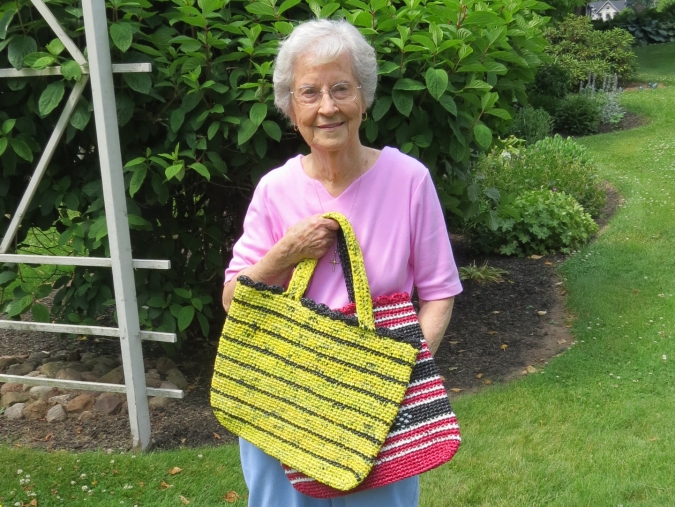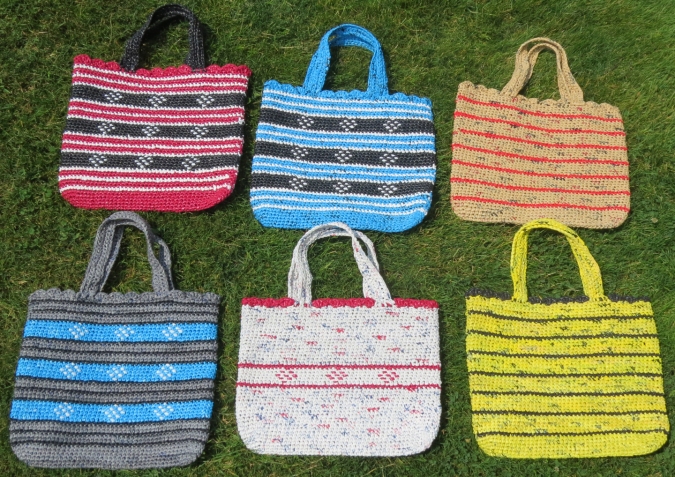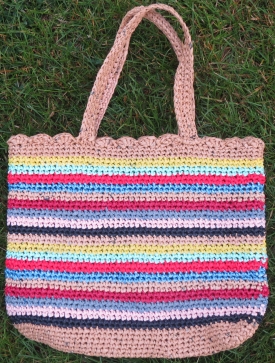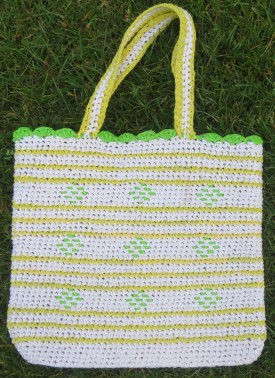Is there a more environmentally friendly hobby than antiques and collectibles? Instead of adding more wood, paper, metals, plastics, and other materials to landfills, we save it all—storing it, displaying it, preserving it.
In certain antiques and collectibles categories, the greenness goes beyond saving; it gets into reusing. The hot new category of Street Art, for example, features creations made from discarded materials. In the Arms and Militaria category, think of all the weaponry, ammunition, and supplies that rest in treasured collections rather than underneath tons of trash. And Folk Art, of course, has a long, long history of practitioners “making do” with reusable materials to create furniture and boxes, decorative items and keepsakes.
I was reminded of the hobby’s greenness recently when I met, finally, a woman named Arlette Sherwood, who lives in a small town in western New York State. I say “finally” because 10 years ago, my sister gave me a piece of her work: a tote bag crocheted entirely from those plastic grocery bags that are, essentially, landfill nightmares. I was instantly impressed by the creativity of the bag and have since bought a few for my daughters.

Arlette Sherwood displays two of the hundreds of carry bags she has crocheted using throw-away plastic retail bags.
I arranged to meet Arlette while doing some research on recycling for another project. The sheer quantity of trash piling up in the United States is alarming: The Environmental Protection Agency notes that we make 251 million tons of garbage per year. A humbling side stat: The U.S. accounts for only 5 percent of our planet’s population but produces 30 percent of its trash.
Anyway, I found Arlette to be as impressive (friendly, sweet, funny) as her tote bags are useful. I looked at a selection of her new creations and thought, “These bags are a kind of utilitarian folk art—all of them hand-crafted, all using throwaway materials, all destined to stick around for a long time.”

At least 420 plastic grocery bags went into this lot of six all-purpose tote bags crocheted by Arlette Sherwood.
They’re colorful, too. You’d be surprised at how many retail stores use customized plastic bags at their checkouts, giving Arlette a nice palette of colors. And they’re water-resistant, tough, and useful.
Even at 93, Arlette can finish a 16 x 20-inch tote bag (using 70 plastic grocery bags) in about a week. She carefully cuts the grocery bags into thin strips and then crochets them into her tough but attractive bags.
How do people use them? “Mostly as a tote for shopping,” she says. “They’re also excellent beach bags because they’re waterproof. I’ve had students buy them to use for their school books. My daughter has five of them; she uses three of them, all in different colors, as totes for work. She uses another to carry her bible and notepad to church and still another as a beach bag.”
 Creating tote bags is a worthy hobby—one that keeps Arlette busy, earns a little money (she has made well more than 200 of them, and donates proceeds to her church), and, yes, helps saves the environment, a bag at a time. Her admirers often collect them, too; my sister owns dozens.
Creating tote bags is a worthy hobby—one that keeps Arlette busy, earns a little money (she has made well more than 200 of them, and donates proceeds to her church), and, yes, helps saves the environment, a bag at a time. Her admirers often collect them, too; my sister owns dozens.
In doing further research on recycling and antiques, I stumbled upon an apropos passage in an 1820 book, The Frugal Housewife, that makes as much sense today as it did nearly 200 years ago, when author Lydia Child wrote it: “Nothing should be thrown away so long as it is possible to make any use of it, however trifling that use may be.”

